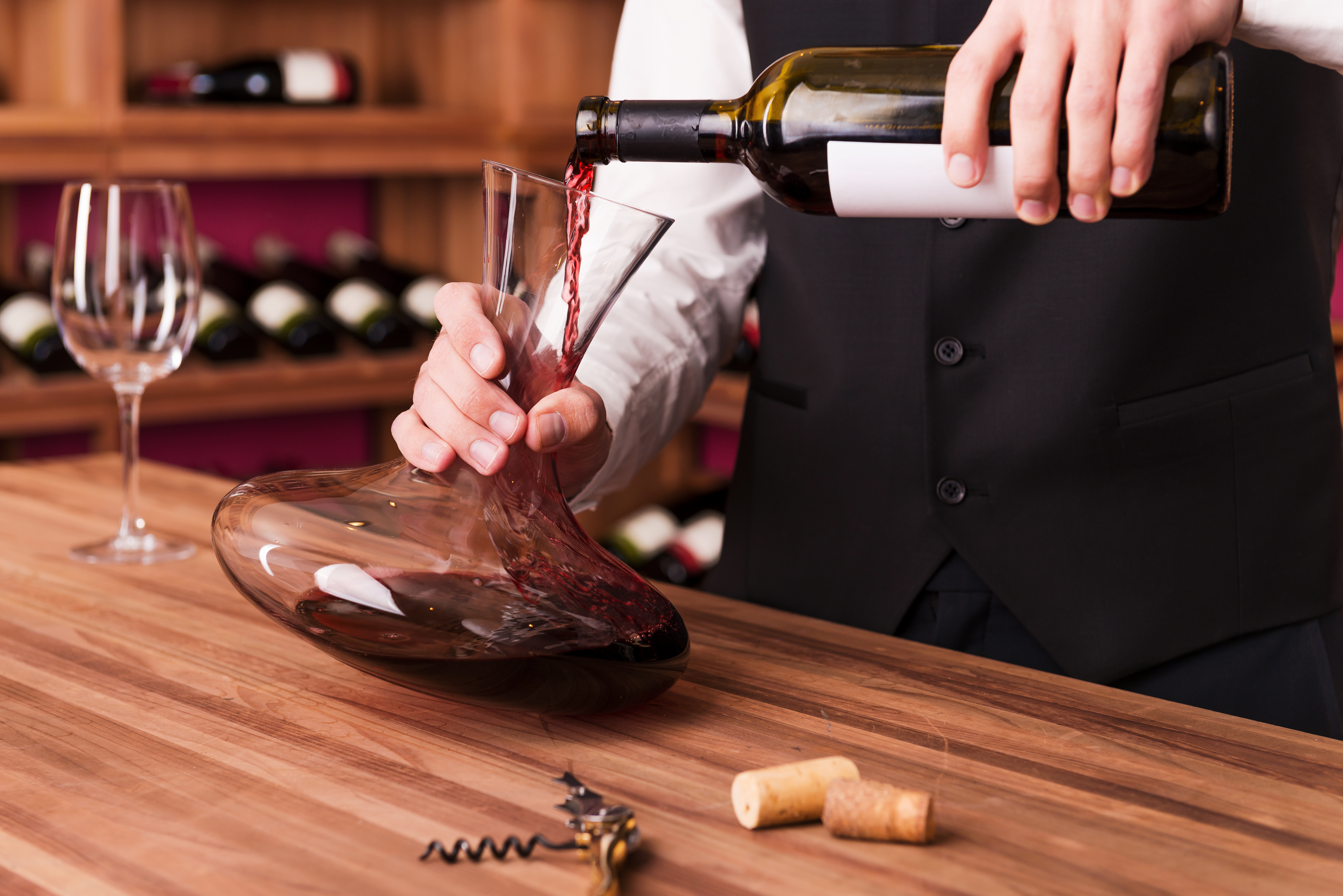Today we’ll learn about breathing and decanting wine.
Most simply put, Breathing is allowing the wine to interact with Oxygen with the cork removed or poured into a decanter. Decanting is the process of separating the sediment in your wine from the juice you desire (and possibly waited years to try). Nothing is worse than an exceptional glass of wine ruined on the last sips by sediment in your mouth, and it is a waste (in our humble opinion) to pour straight out of the bottle just after opening as the wine will be tight and not show its full potential.
Breathing (or aerating) improves the flavors of the wine. Understanding a bit about the age of your wine is crucial to this process though. A 3-year-old Napa Cab, for example, can be opened one night, and possibly taste better 24 hours later. It’s youthful, and therefore has more life. A 25-year-old Bordeaux is in the twilight of its life, and thus, will only be ‘alive’ for a very brief time upon opening, maybe 2-3 hours.
Now-a-days, there are a number of great toys to accelerate the aeration of our wines (Vinturi, Rabbit, etc.) and in a number of cases, they come in quite handy. Sometimes we forget to open our bottle of greatness by getting caught up in conversation, stirring over the stove, or having unexpected guests show up. These tools are great to have on hand, and if you ever have a sceptic around, it is always fun to pour a glass directly from the bottle, then pour one through an aerator alongside it and have your sceptic (may even be yourself) taste both. Works every time!
Let’s circle back to the wines in the twilight of their life now. These are best left breathing in the bottle, or if you have the timing right on your bottle’s life and you plan to consume within the window of its remaining time, you’d best to decant it. Think of it as though it was your Grandparents. They probably don’t like to be rushed to get ready or be somewhere as they don’t have the spry energy of a teenager, who can’t seem to get anywhere quick enough. If you try to make them hustle, they will get agitated with you. An aged wine will react the same way, so we don’t recommend aerating these (a few exceptions to the rule exist none the less).
As for decanting, wines heavy in sediment (usually occurs with extended aging, or unfiltered wines after a few years of resting on its side) will benefit from the effects of breathing in a decanter as more oxygen is in contact than if it were left in the bottle, and it allows the wine’s sediment to settle into a reservoir at the bottom. There are many shapes and sizes of decanters, but the most common has a large well at the base with a concave neck. This allows the reservoir at the bottom to trap the sediment and keep it separated from the juice when you pour, although, be mindful as to the angle at which you tilt the decanter, too much, and the sediment will slide down the neck and into the glass. Practice makes perfect!
Fun fact: It is believed that the Bordeaux-styled wine bottle was created with its distinctive ‘shoulders’ to catch the sediment in the same manner as modern decanters for the heavier sedimented wines Cabernet Sauvignon & Merlot, as these wines are generally meant to be aged for some time, although there is no actual proof this is true…yet.

